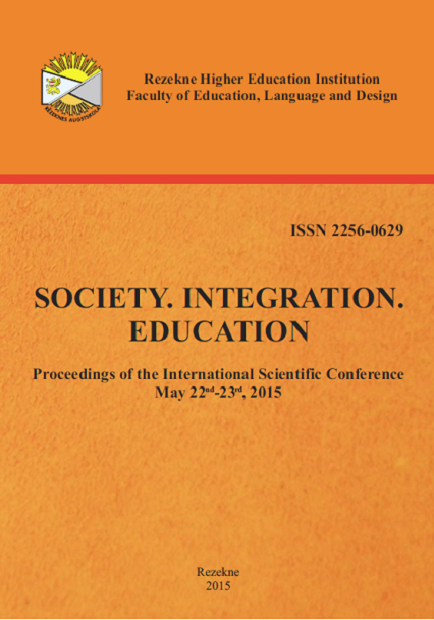Symptomatic Speech Disorders - Theoretical Basis and Practical Applications
DOI:
https://doi.org/10.17770/sie2015vol3.388Keywords:
symptomatic speech disorders, sensory impairment, communication disorder, speech therapistsAbstract
Area of symptomatic speech disorders in person with sensory disabilities still stands on the edge of the interests of professionals. The article deals with the issue of speech therapy, special education of person with hearing impairment, and special education of person with visual impairment. Disruption of communication for people with sensory disabilities is one of the determinants of the quality of life. Within a broader theoretical framework symptomatic speech disorders in person with visual and hearing disability will be planted partial results of research with qualitative orientation. The exhibition will include in particular the issue of awareness, experience, access and awareness of speech therapists in the intentions of the issue.
Downloads
References
Estabrooks,W. (Ed.) (2006). Auditory-Verbal Therapy and Practice. Washington, DC: A.G. Bell.
Bergeron, J. P., Lederberg, A. R., Easterbrooks, S. R., Miller, E. M., & Connor, C. M. (2009). Building the Alphabetic Principle in Young Children Who Are Deaf or Hard of Hearing. Volta Review, 109(2/3), 87-119.
Bruce, S. M. (2002). Impact of a communication intervention model on teachers’ practice with children who are congenitally deaf-blind. Journal of Visual Impairment & Blindness, 96, 154–168.
Chen, D. (1996). Parent-infant communication: Early intervention for very young children with visual impairment or hearing loss. Infants and Young Children, 9(2), 1-12
Daneshmandan, N., Borghei, P., Yazdany, N., Soleimani, F., & Vameghi, R. (2009). Oral Communication Development in Severe to Profound Hearing Impaired Children After Receiving Aural Habilitation. Acta Medica Iranica, 47(5), 363-367.
Dickinson, C. M., & Taylor, J. (2011). The effect of simulated visual impairment on speech-reading ability. Ophthalmic & Physiological Optics, 31(3), 249-257. doi:10.1111/j.1475-1313.2010.00810.x
Hendl, J. (2008). Kvalitativní výzkum: základní teorie, metody a aplikace. Praha: Portál.
Landolfi, E., Lilli, G., Marciano, E., & Laria, C. (2011). The development of language in babies and the role of the family. Journal Of Maternal-Fetal & Neonatal Medicine, 24120-121. doi:10.3109/14767058.2011.607611
Pijnacker, J., Vervloed, M., & Steenbergen, B. (2012). Pragmatic Abilities in Children with Congenital Visual Impairment: An Exploration of Non-literal Language and Advanced Theory of Mind Understanding. Journal of Autism & Developmental Disorders, 42(11), 2440-2449. doi:10.1007/s10803-012-1500-5
Preisler, G. M. (1991). Early patterns of interaction between blind infants and their sighted mothers. Child: Care, Health and Development, 17, 65-90.
Rowland, C. (1984). Preverbal communication of blind infants and their mothers. Journal of Visual Impairment & Blindness, 78, 297-302.
Sak-Wernicka, J. (2014). The Effect of Nonverbal Cues on the Interpretation of Utterances by People with Visual Impairments. Journal Of Visual Impairment & Blindness, 108(2), 133-143.
Sapp, W. (2001). Maternal Perceptions of Preverbal Communication in Children With Visual Impairments. Re:View, 33(3), 133-144.


